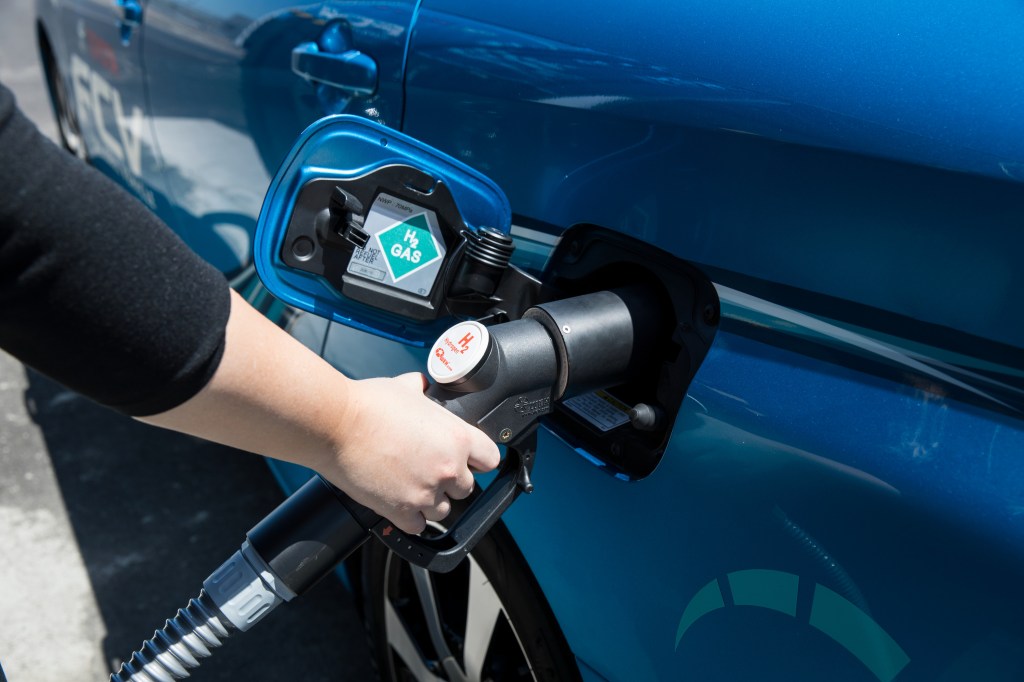
The arrival of three Mirai fuel cell-vehicles in Australia is expected to kick-start an industry conversation about the future of automotive power production and energy supply, thanks to a recent campaign launch by Toyota Australia.
Toyota’s manager of Government Affairs and Environment Andrew Willis said the new cars would be in Australia until 2019.
“The purpose is to better explain to consumers, to government and other stake holders, that (a fuel cell car) doesn’t change the ownership paradigm for the customers,” he said.
“Fuel cell cars offer the same convenience as conventional cars, and offer the same drive experience (in terms of) powering and handling.
“The other benefit we find is that the driving range is around 550km. You don’t have to plug anything in, you don’t have to wait for anything to charge; it is the same as what people are used to now.”
The Mirai is the world’s first mass-produced hydrogen fuel-cell sedan, sold in Japan, US and Europe in areas supported by appropriate refuelling infrastructure.
While Toyota claimed there are no plans at this stage to market Mirai in Australia (due to a lack of refuelling infrastructure), the company has aimed to demonstrate the operational similarities of the vehicle compared to conventional cars, and other alternatively-powered vehicles such as Tesla electric cars.
At a campaign launch in Melbourne on November 16, Toyota corporate manager product planning Michael Elias reassured drivers that refuelling the new vehicles was not remarkably different from refuelling conventional vehicles.
“All the [refuelling] conveniences, that customers are used to, remain. The fuel nozzle sits behind the fuel flap; the nozzle is very much like plugging into an LPG nozzle. Refuelling takes just three minutes, replicating the current service station experience,” he said.
Based on prices at commercial refuelling stations overseas, Toyota said the cost of refuelling the hydrogen tanks would be around $60.
While certain advantages to fuel cell cars are obvious, such as lower emissions and energy efficiency, Mr Willis said he understood there’s no easy answer to the current lack of infrastructure in Australia: Fuel companies are reluctant to build expensive infrastructure until there is consumer demand, while consumers are reluctant to purchase such vehicles until refuelling facilities are in place.

“We’ve still got a work of work to do in that space. To move it forward we need a whole-of-industry approach,” Mr Willis said.
“Governments, fuelling companies, other auto brands; there are a range of things we need to work through before we can commercialise it in Australia.
“Because of this, we think a ‘return to base’ business model might be the way to start things off, where a company that runs a large fleet can set up a refuelling infrastructure.
Mr Willis said the vehicles could be used for the day, then returned to base for refuelling at the end of the day.
“That’s a logical start point because you get a volume of cars coming back to use the one refuelling facility,” he said.
“From that, an extension would be some additional infrastructure which could then be strategically rolled out in major cities. That way we can progressively roll out the technology to meet customer demand.
“That’s our idea at this stage [but] we need cooperation and agreement from other stakeholders to move it forward.”
Toyota has commissioned its own mobile refueller to keep its three Mirai sedans on the road. Hydrogen, delivered to the refueller in bottles, is cooled and pressurised to the required 70MPa (700bar) before being pumped into the vehicle.

